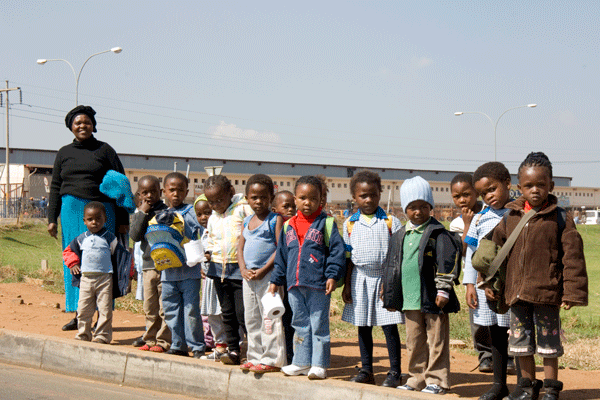
With pedestrians being the most vulnerable of road users in South Africa, the national roads agency has embarked on reducing the number of accidents involving pedestrians walking next to national roads.
The South African National Roads Agency (SOC) Limited (SANRAL) is taking steps to curb the risk for at least 12.4-million pedestrians under the age of 24-years who walk to school daily and are at risk of being in an accident.
Randall Cable, SANRAL’s engineering manager for the Western Cape Region, said the number of pedestrian fatalities (approximately 40% of all road deaths in South Africa) are being addressed through a combination of activities by the agency:
- Safer roads and the provision of infrastructure such as pedestrian bridges and sidewalks.
- Greater awareness among other road users about the possible presence of pedestrians on or close to roads.
- Education programmes in schools to make children mindful about road safety at an early age.
About a third of all schools in the country are located within 5km of the 22 203km national road network managed by SANRAL.
Train the trainers
The agency’s aim is to educate the 6.3-million learners who use these roads before and after school. Scientifically developed material will make them aware of dangers and how to avoid them.
Working closely with education authorities, SANRAL aims to “train the trainers” – getting the information to teachers and mobilising their support to impart the correct messages to their learners.
The material is incorporated into regular subjects at school – whether it is life skills or maths – and the educators have access to flip cards, posters and other teaching aids.
The behavioural research informs the content development based on the latest available research.
This initiative has already reached 1 940 schools and more than 14 000 teachers have received training and learning materials. The programme will continue to expand to benefit an increasing number of learners living in close proximity to the major highways.
Cable said: “Our primary goal is that this awareness leads to changed behaviour and our future efforts will increasingly be geared toward achieving this goal.”
The roads agency’s programme fits into the Safe Systems approach advocated by the United Nations (UN). South Africa is making a great contribution to the UN’s global Decade of Action on Road Safety, by sharing its research and experience in the field of education.

